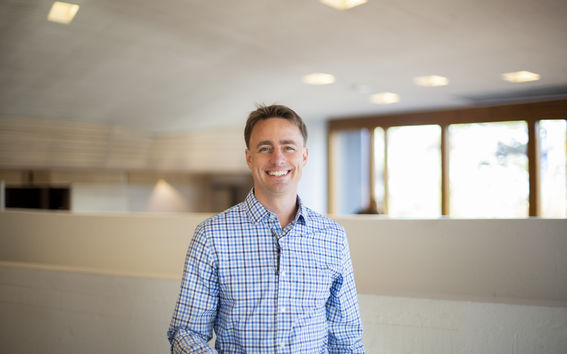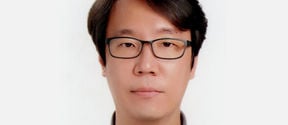Professor Zach Taylor is finding technological solutions to clinical problems

What kind of research do you do, and why?
My research is best described by two fields (1) Diagnostic medical imaging and (2) Millimetre wave and THz techniques. While a large portion of my medical diagnostic work involves millimeter and THz frequency radiation, I have begun parallel research using UV, visible, and NIR radiation. All of this work is done in close collaboration with physician scientists. We are very careful in ensuring that our clinical collaborators define the clinical problem and that we respond with the appropriate technological solution. This maximizes the chances of successful clinical translation. Overall, our major research goal is to improve patient outcomes.
Many people in my field call the THz band the “final frontier of the electromagnetic spectrum”. This label acknowledges that large scale, commercial applications for the THz band have not been found. Many applications have been presented and studied but wide scale commercialization has not been achieved. We believe that our work in medical diagnostics will further the growth and commercialization of THz technology.
How did you become a researcher?
I did not have plans to become a researcher until quite recently. I went to graduate school after college because I felt like I hadn’t learned enough. I did a postdoc at UCLA because I liked working on diagnostic medical imaging and realized that continuous and easy access to clinicians (the end end user) was necessary. I stayed on at UCLA as an adjunct assistant professor in bioengineering and surgery when I realized that most of my work was too early stage for a standard medical device company and, even, for most startups. Around this time I realized that a career as a researcher was necessary to keep doing what I was doing.
What are the highlights of your career?
The highlight of my career was receiving the IEEE Transactions on Terahertz Science and Technology best paper award at the 2016 International Microwave Symposium in San Francisco. The award was for some foundational work we did on corneal water content sensing. It was the first professional validation I had ever received. One of the downsides to applications research, especially with millimetre wave and THz technology, is that you spend so much time building, debugging, and optimizing systems. It is painful, back breaking, and unsexy work that generally cannot be published. A person can easily spend years piecing things together and calibrating before any significant application specific experiments are performed. I had been slogging through the cornea project for nearly 6 years with nothing to show and was nearing a crisis of faith. The timing of the award could not have been better.
In addition to scientific validation, this award confirmed that I can create functional teams of (1) engineers/basic scientists and (2) clinicians where the sum is more than the parts. These teams are necessary for translational research and this validation gave me the confidence to continue my career as a researcher.
What is the most important quality for a researcher?
The most important quality for a researcher is the management of discouragement. A colleague once described students as like moles where they spend their studies digging under the ground, not really knowing where they are going and not seeing the light, just taking on faith that they will arrive. At some point (graduation?) they emerge from the ground, into the light, and can revel where their work and learning has taken them. Conversely, if they pay attention too closely to where they are while digging they fall into despair.
I think researchers are the same way. If you are working on hard problems then you must manage your discouragement by taking on faith that you will arrive.
What do you expect from the future?
I hope that in the future, some system I am working on will become real. In other words, we will create capability that people need. Our engineering will solve some critical problem and the result will impact the end user community, not just our own academic community.
- Published:
- Updated:
Read more news

Min-Kyu Paek has been appointed Assistant Professor at the Department of Chemical and Metallurgical Engineering
Min-Kyu Paek has been appointed Assistant Professor at the Department of Chemical and Metallurgical Engineering
Aalto ARTS alum Vidha Samya’s artwork featured at the Venice Biennale 2024
The Pavilion of Finland presents ‘The pleasures we choose’ at the 60th International Art Exhibition – La Biennale di Venezia until 24 November 2024.
IoT Forge donates EUR 1 million to the School of Engineering
The donation will be used for research and education on the Industrial Internet and digital twins.